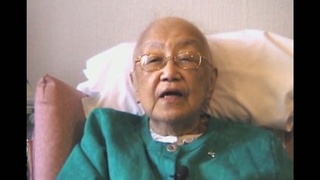Interviews
Post-war experiences in Lima (Spanish)
(Spanish) At that time I was still little, but it’s true that in the countryside you didn’t notice anything unusual. There weren’t those, you know, ugly gestures by Peruvians against Nikkei. But I remember in 1947, after we’d already returned to Lima and it had been two years since the end of the war, still there was a kind of fear in certain people.
I even remember that my family arrived in Lima at a time when high school classes had already started, so that they couldn’t enroll me. And my father said, “You’re not going to spend all this time just doing nothing. Go and learn a little Japanese.” At that time, in 1947, the Japanese and their descendents, we couldn’t meet together freely, so we would go to the little school, which was basically underground.
I remember it was on a street called Corcovado, one block from Giron and Cuzco, it was a long alleyway. On the second floor there was a sensei (teacher) named Hirose. He had a classroom where we’d all go- little kids, young kids and older kids . There he would teach us Japanese, nihongo. To leave, since we couldn’t leave as a group, we would go out in twos. Two of us would go first, after a few minutes passed another two would leave, and so on, as a way of disguising it. Incredible, isn’t it? Incredible. And it had already been two years since the war.
Date: October 7, 2005
Location: California, US
Interviewer: Ann Kaneko
Contributed by: Watase Media Arts Center, Japanese American National Museum.









